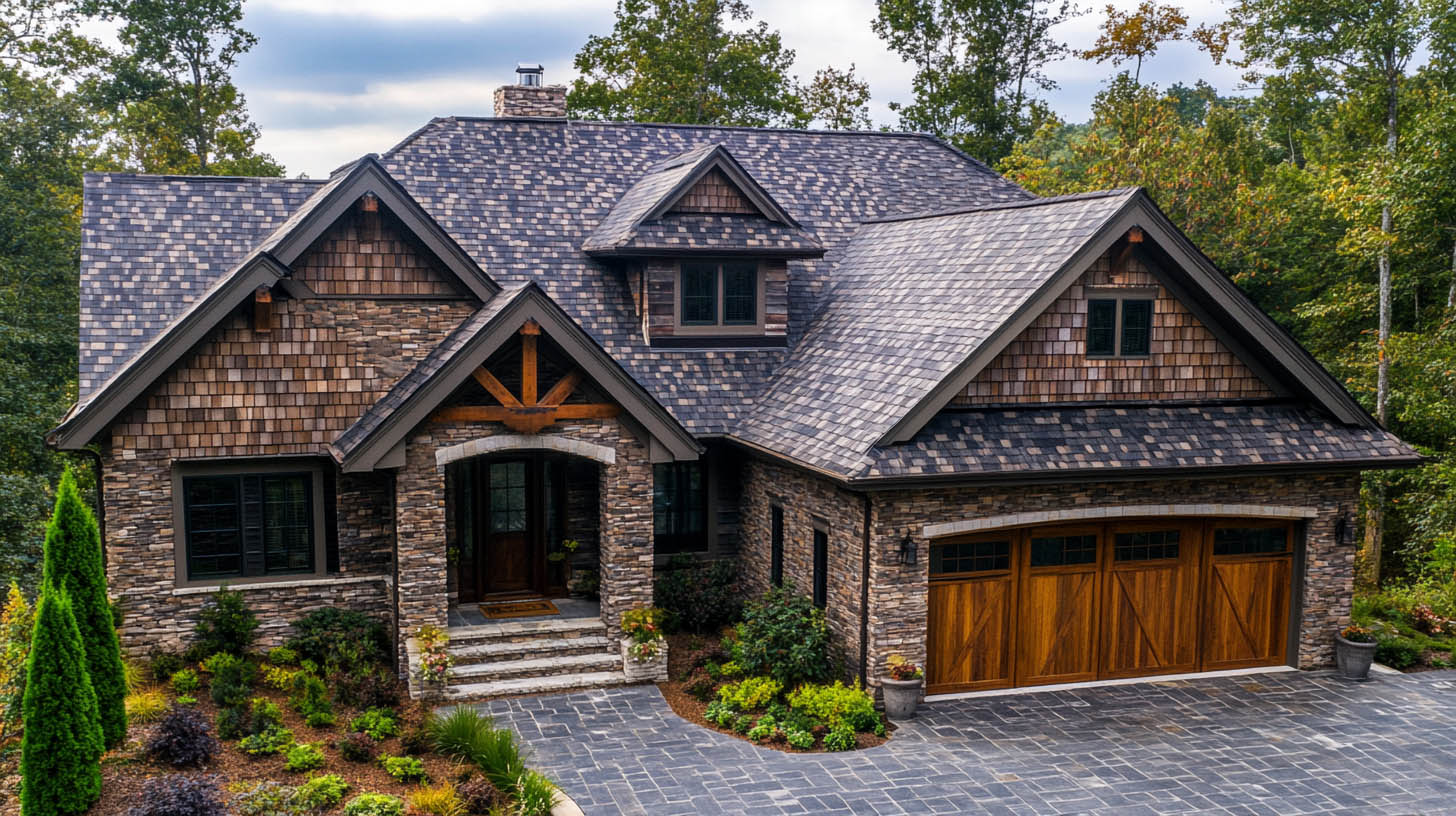
Cedar roofing is a popular choice for its rustic appeal, excellent insulation, and durability. When deciding between cedar shakes and shingles, it’s important to understand their unique characteristics to select the option that best suits your needs. Companies like Rainstoppers Roofing provide expert advice and installation for cedar roofing.
What Are Cedar Shakes?
Cedar shakes are hand-split from cedar logs, resulting in a thicker, more rugged appearance. Their uneven texture and variable thickness make them ideal for a rustic, natural aesthetic. Commonly used on colonial-style homes, shakes age beautifully, transitioning from orange to silvery gray over time.
- Thickness: Typically ½ to ¾ inch
- Advantages: Enhanced durability and insulation for extreme weather conditions
- Considerations: Requires underlayment to prevent moisture leakage due to gaps.
What Are Cedar Shingles?
Cedar shingles are machine-cut, providing uniform size, thickness, and shape. Their smooth, flat surface creates a clean, polished look, making them a popular choice for modern or traditional homes.
- Thickness: Thinner than shakes, offering less insulation
- Advantages: Easy to install and does not require underlayment
- Considerations: Provides a more structured, elegant appearance than shakes.
Key Differences Between Cedar Shakes and Shingles
- Production Process: Shakes are hand-split, giving them a natural, irregular look, while shingles are machine-made for uniformity.
- Insulation: Shakes offer superior insulation due to their thickness.
- Appearance: Shakes have a rustic aesthetic, while shingles provide a neat, elegant finish.
- Installation: Shakes require underlayment for moisture protection, whereas shingles do not.
- Durability: Both options are durable, but shakes may perform better in harsh climates due to their thickness.
Similarities Between Cedar Shakes and Shingles
- Material Aging: Both begin with an orange hue and gradually weather to a silvery gray.
- Maintenance Needs: Regular cleaning and sealing are necessary to maintain their condition.
- Aesthetic Appeal: Both provide a classic, timeless look for residential properties.
Unique Fact: Cedar shakes and shingles have been used in North America since colonial times, with their natural aging process and durability making them a long-standing choice for roofing.
FAQs
1. How long do cedar shakes and shingles last? With proper maintenance, both can last 30–50 years.
2. Which is more expensive: cedar shakes or shingles? Shakes are generally more expensive due to their thicker material and manual production process.
3. Are cedar shakes or shingles better for insulation? Shakes offer better insulation because of their thickness.
4. Can cedar roofs withstand extreme weather? Yes, both shakes and shingles are durable, but shakes are better suited for harsh climates.
5. Do cedar roofs require regular maintenance? Yes, regular cleaning, sealing, and inspections help maintain their longevity and appearance.
Selecting between cedar shakes and shingles depends on your aesthetic preferences, budget, and climate. For expert installation and guidance, turn to professionals like Rainstoppers Roofing, ensuring a roof that combines beauty and functionality.If you want to read a blog about which roof underlayment lasts the longest, click here.
